
Iconic Facts About South America (The Best 61 Disclosed)
Facts About South America
South America, the fourth-largest continent in the world, is a land of diverse cultures, stunning landscapes, and rich history. It is home to the world’s largest rainforest, the Amazon, and some of the highest peaks in the Andes Mountain range. This article will explore interesting facts about South America, covering various aspects of its geography, wildlife, and cultural heritage. Whether you’re a nature lover or a history enthusiast, you’ll find something intriguing about this vibrant continent.
Facts About South America – Geographical Wonders
Amazon Rainforest
The Amazon Rainforest is one of the most iconic natural features of South America. Covering an area of approximately 2.1 million square miles, it is the largest rainforest in the world. This vast jungle is home to a diverse range of flora and fauna, including the green anaconda and the Andean condor.
Andes Mountains
Stretching over 4,300 miles along the western coast of South America, the Andes Mountains are the longest mountain range in the world. They boast some of the highest peaks, such as Mount Aconcagua, which stands at 22,841 feet above sea level.
Atacama Desert
The Atacama Desert in northern Chile is known as the driest place on Earth. Some areas of this desert have not seen rainfall for centuries, creating an otherworldly landscape that is both harsh and beautiful.
Facts About South America – Cultural and Historical Highlights

Indigenous People and Languages
South America is home to numerous indigenous tribes, each with its own unique culture and language. The most common indigenous language is Quechua, spoken by millions of people across several countries.
Inca Empire
The Inca Empire, which flourished in the Andes Mountains, is one of the most significant civilizations in South American history. Machu Picchu, an ancient Incan city, is one of the New Seven Wonders of the World and a testament to the architectural prowess of the Incas.
Colonial Influence
Colonized by European powers in the 15th and 16th centuries, South America has a rich blend of cultures. Spanish and Portuguese are the predominant languages, with many countries celebrating a mix of indigenous and European traditions.
Facts About South America – Major Cities and Landmarks
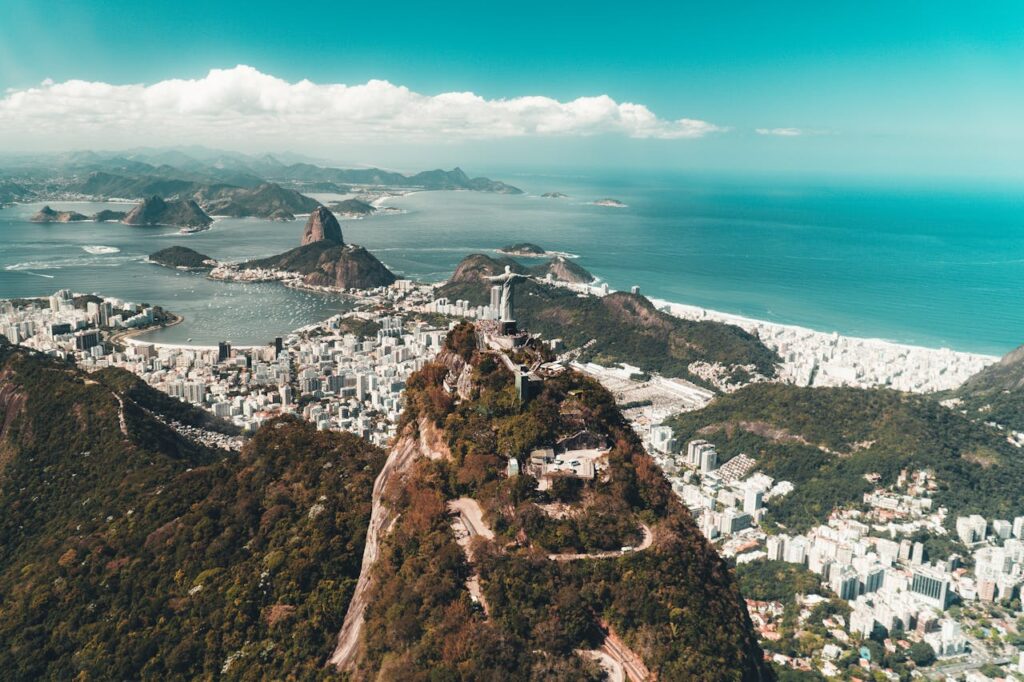
Rio de Janeiro
Famous for its vibrant Carnival festival, Rio de Janeiro in Brazil is one of South America’s most iconic cities. It is also home to the Christ the Redeemer statue, a symbol of Christianity and a major tourist attraction.
Buenos Aires
The capital of Argentina is Buenos Aires, it’s known for its European-style architecture and vibrant cultural scene. The city is a hub for music, dance, and art, making it a must-visit for culture enthusiasts.
La Paz
La Paz, the highest administrative capital in the world, is located in Bolivia. Situated at an altitude of 11,975 feet above sea level, it offers breathtaking views of the surrounding Andes Mountains.
Facts About South America – Natural Wonders and Wildlife
Amazon River Basin
The Amazon River Basin is another remarkable feature of South America’s physical geography. It covers approximately 2.7 million square miles, making it the largest river basin in the world. The Amazon River, flowing through this basin, is the second longest river globally.
Galápagos Islands
The Galápagos Islands, part of Ecuador, are renowned for their unique wildlife and played a crucial role in Charles Darwin’s theory of evolution. These remote islands are home to species found nowhere else on Earth.
Iguazu Falls
Straddling the border between Argentina and Brazil, Iguazu Falls is one of the most spectacular waterfalls in the world. It consists of 275 individual falls, creating a breathtaking natural spectacle.
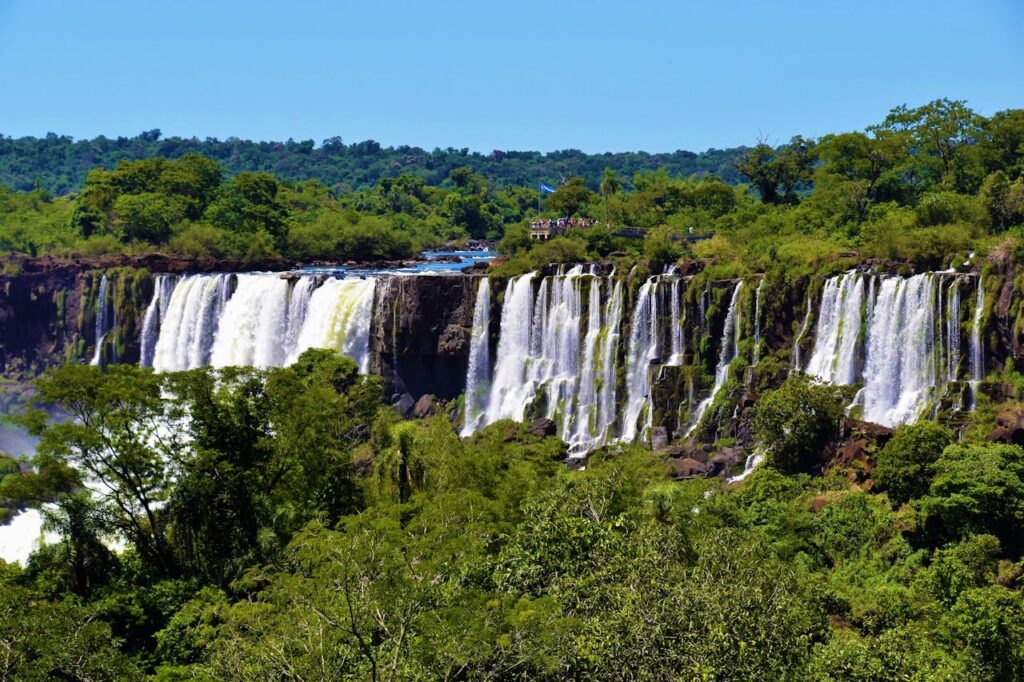
Facts About South America: Frequently Asked Questions
What are the most interesting facts about South America?
South America is home to the Amazon Rainforest, the largest rainforest in the world. It also boasts the Andes Mountains, the longest mountain range globally, and Lake Titicaca, the highest navigable lake. The continent is known for its diverse cultures and significant historical landmarks such as Machu Picchu.
What is the largest country in South America?
The largest country in South America by both land area and population is Brazil. It covers approximately 3.3 million square miles and is known for its vibrant culture and diverse ecosystems.
What is the official language of Brazil?
The official language of Brazil is Portuguese. This is due to the country’s colonization by Portugal in the 16th century.
What are the major rivers in South America?
Major rivers in South America include the Amazon River, the Orinoco River, and the Paraná River. The Amazon River is particularly notable as it is the second longest river in the world and has the largest drainage basin.
What is the highest navigable lake in the world?
Lake Titicaca, located on the border between Peru and Bolivia, is the highest navigable lake in the world. It sits at an elevation of 12,507 feet above sea level.
How many independent countries are in South America?
There are 12 independent countries in South America. These are Argentina, Bolivia, Brazil, Chile, Colombia, Ecuador, Guyana, Paraguay, Peru, Suriname, Uruguay, and Venezuela.
Facts About South America Conclusion
South America is a continent of immense diversity and wonder. From the lush Amazon Rainforest to the towering Andes Mountains, it offers a wealth of natural beauty and cultural richness. Exploring facts about South America reveals a land of contrasts and surprises, making it a fascinating destination for travelers and scholars alike.
Natural Wonders and Wildlife (Continued)
Angel Falls
Angel Falls, located in Venezuela, is the highest waterfall in the world, with a height of 3,212 feet. It plunges from the Auyán-Tepuí mountain in the Canaima National Park. This spectacular waterfall is named after Jimmy Angel, an American aviator who was the first to fly over the falls.
Lake Titicaca
Situated in the Andes Mountains, Lake Titicaca is the largest lake in South America by volume and surface area. The lake’s unique location at a high altitude makes it a significant cultural and historical site for the indigenous people, who have inhabited its shores for centuries.
Atacama Desert
In addition to being the driest place on Earth, the Atacama Desert is known for its rich mineral resources, including copper and lithium. The desert’s clear skies and high altitude make it an ideal location for astronomical observatories, attracting scientists from around the world.

Cultural Richness and Heritage
Indigenous Tribes
South America is home to a vast array of indigenous tribes, each with distinct languages, traditions, and ways of life. These tribes have a deep connection to the land and have preserved their cultural heritage despite centuries of colonization and modernization.
Languages of South America
While Spanish and Portuguese are the predominant languages, South America is incredibly linguistically diverse. Indigenous languages such as Quechua, Aymara, and Guarani are still widely spoken, preserving the rich cultural history of the continent.
Festivals and Traditions
South American countries are known for their vibrant festivals and traditions, which reflect a blend of indigenous, African, and European influences. The Carnival in Rio de Janeiro, Inti Raymi in Peru, and the Flower Fair in Colombia are just a few examples of the continent’s lively cultural celebrations.
Colonial Architecture
The colonial history of South America is evident in its architecture. Cities like Cartagena in Colombia, Quito in Ecuador, and Cusco in Peru feature well-preserved colonial buildings, cobblestone streets, and historic churches, offering a glimpse into the continent’s past.
Modern South America
Economic Growth
In recent years, South America has seen significant economic growth, driven by industries such as agriculture, mining, and tourism. Countries like Brazil, Argentina, and Chile have become major players in the global market, contributing to the continent’s development.
Urbanization
South America is one of the most urbanized continents, with major cities like São Paulo, Buenos Aires, and Bogotá experiencing rapid growth. These cities are hubs of culture, commerce, and innovation, attracting people from rural areas and contributing to the continent’s dynamic urban landscape.
Environmental Challenges
Despite its natural beauty, South America faces several environmental challenges, including deforestation, pollution, and climate change. Efforts are being made to address these issues through conservation projects, sustainable development practices, and international cooperation.
Environmental Challenges (Continued)
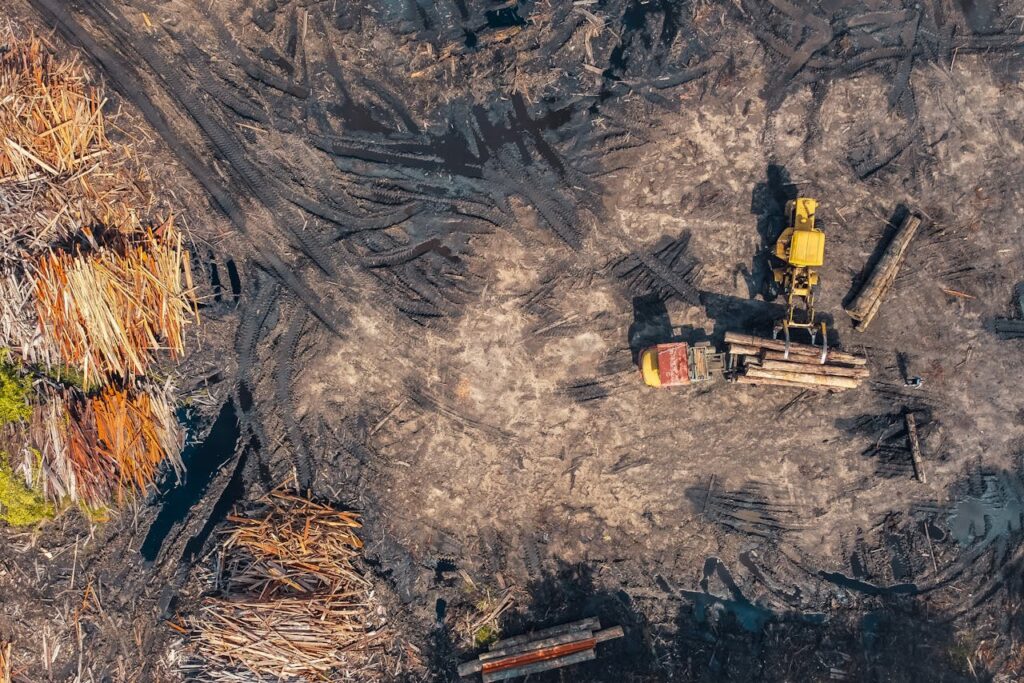
Deforestation in the Amazon
Deforestation is a significant issue in the Amazon Rainforest. This vast ecosystem, often referred to as the “lungs of the Earth,” is crucial for regulating the global climate. Unfortunately, extensive logging, agriculture, and mining activities have led to large-scale deforestation. Efforts to combat this include reforestation projects, stricter enforcement of environmental laws, and initiatives promoting sustainable land use practices.
Climate Change Impact
Climate change poses a severe threat to South America’s diverse ecosystems. Rising temperatures, changing precipitation patterns, and extreme weather events are affecting both natural habitats and human communities. For instance, the Andean glaciers are rapidly melting, impacting water supplies for millions of people. Coastal areas, including major cities like Buenos Aires and Rio de Janeiro, are also at risk due to rising sea levels.
Conservation Efforts
Numerous conservation projects across South America aim to protect its unique biodiversity. National parks and nature reserves, such as Torres del Paine in Chile and Manu National Park in Peru, play a crucial role in preserving wildlife and natural landscapes. International collaborations and local initiatives are also essential in addressing environmental issues and promoting sustainable development.
Facts About South America – Iconic Landmarks

Machu Picchu
Machu Picchu, an ancient Incan city located in the Peruvian Andes, is one of the most iconic landmarks in South America. This archaeological marvel, situated at an altitude of 7,970 feet, is renowned for its well-preserved ruins and stunning mountainous backdrop. It attracts millions of tourists each year, eager to explore its historical significance and architectural brilliance.
Christ the Redeemer
Standing tall on the Corcovado Mountain in Rio de Janeiro, the Christ the Redeemer statue is a symbol of Christianity and a cultural icon of Brazil. This colossal statue, standing at 98 feet tall, overlooks the city and offers panoramic views of Rio’s landscape, including the famous beaches of Copacabana and Ipanema.
Easter Island
Easter Island, a remote island in the southeastern Pacific Ocean, is famous for its mysterious Moai statues. These massive stone figures, created by the Rapa Nui people, have intrigued historians and archaeologists for centuries. The island, which is part of Chile, is a UNESCO World Heritage site and a testament to the ingenuity of its ancient inhabitants.
Iguazu Falls
Iguazu Falls, straddling the border of Argentina and Brazil, is one of the largest and most impressive waterfall systems in the world. The falls stretch over 1.7 miles and consist of 275 individual drops. The surrounding Iguazu National Park, a UNESCO World Heritage site, is home to a diverse range of wildlife, including jaguars and tapirs.
Facts About South America – Diverse Ecosystems
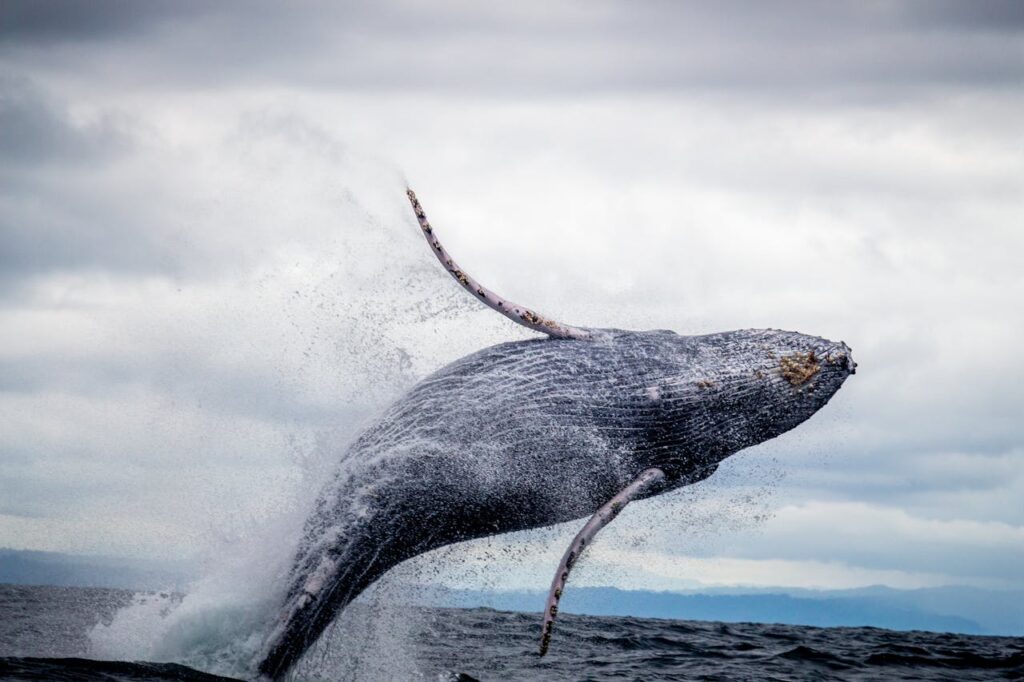
Atlantic and Pacific Oceans
South America’s eastern and western coastlines are flanked by the Atlantic and Pacific Oceans, respectively. These coastlines feature diverse ecosystems, from the tropical beaches of Brazil to the rocky shores of Chile. Marine life is abundant, with species such as the green sea turtle and humpback whale commonly found in these waters.
Orinoco River Basin
The Orinoco River Basin, located in Venezuela and Colombia, is one of the largest river systems in South America. It supports a rich biodiversity, including the Amazon River dolphin and the giant otter. The basin’s extensive wetlands and rainforests are vital for the ecological balance of the region.
Brazilian Highlands
The Brazilian Highlands, also known as the Brazilian Plateau, cover a significant portion of Brazil. This region is characterized by its rolling hills, rugged cliffs, and diverse vegetation. It is an essential area for agriculture, with coffee, soybeans, and sugarcane being major crops.
Facts About South America – Historical Figures
Christopher Columbus
Christopher Columbus, the Italian explorer, played a pivotal role in the European discovery of the American continent. His voyages in the late 15th century opened the door for further exploration and colonization of South America by European powers.
Amerigo Vespucci
Amerigo Vespucci, an Italian explorer and cartographer, is credited with demonstrating that the New World was not part of Asia but a separate continent. The name “America” is derived from his first name, honoring his contributions to the exploration of the American continent.
Charles Darwin
Charles Darwin, the English naturalist, made significant contributions to the field of biology through his observations in the Galápagos Islands. His study of the unique species on these islands played a crucial role in the development of his theory of evolution by natural selection.
Facts About South America – Modern Attractions and Economic Activities
São Paulo
São Paulo, the largest city in Brazil and one of the biggest cities in the world, is a major economic and cultural hub. Known for its vibrant arts scene, diverse population, and significant financial district, São Paulo is often considered the economic heart of South America. The city hosts numerous international events and exhibitions, contributing to its global significance.
Buenos Aires
Buenos Aires, the capital of Argentina, is celebrated for its rich cultural life, with a thriving theater scene, numerous museums, and lively tango music and dance. The city’s European-style architecture and bustling nightlife make it a popular destination for tourists and expatriates alike.
Lima
Lima, the capital of Peru, is a city that blends ancient history with modern life. The city is known for its well-preserved colonial architecture, as well as its vibrant culinary scene, which is considered one of the best in the world. Lima’s coastal location makes it an important economic center, particularly in trade and tourism.
Facts About South America – Unique Wildlife
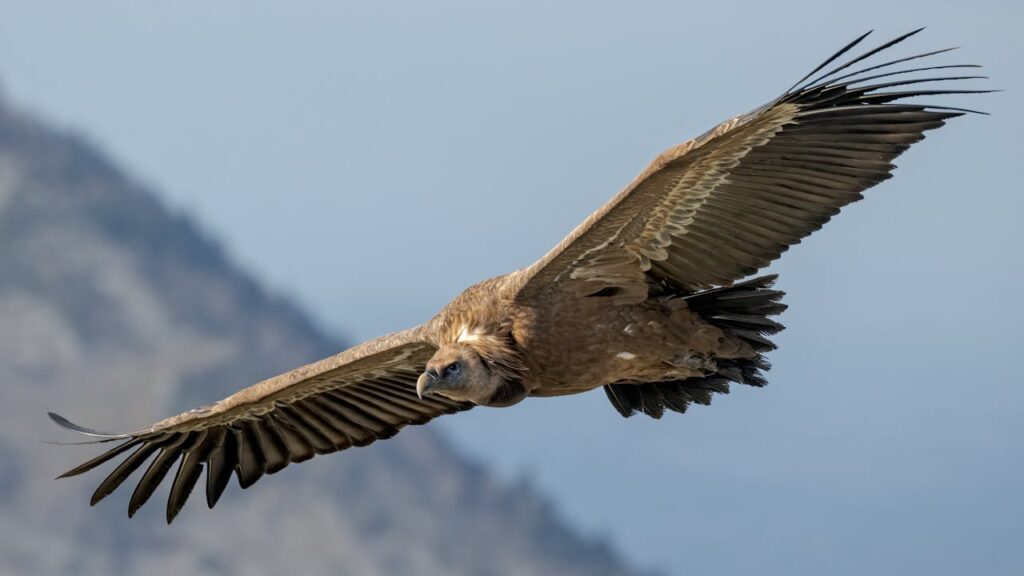
Andean Condor
The Andean Condor, one of the largest flying birds in the world, is a symbol of the Andes Mountains. This majestic bird has a wingspan of up to 10 feet and plays a crucial role in the ecosystem as a scavenger. Efforts to protect the Andean Condor have been increasing, as it faces threats from habitat loss and hunting.
Green Anaconda
The Green Anaconda, found in the Amazon Rainforest and other parts of South America, is one of the largest and heaviest snakes in the world. Known for its impressive size and strength, the green anaconda is an apex predator in its habitat, preying on a variety of animals, including fish, birds, and mammals.
Galápagos Tortoise
The Galápagos Tortoise is one of the most famous inhabitants of the Galápagos Islands. These giant tortoises can live for over 100 years and are an integral part of the islands’ ecosystem. Conservation efforts have helped increase their population, which had been severely threatened by human activities.
Jaguar
The jaguar, the largest cat in the Americas, is native to the rainforests and savannas of South America. This powerful predator is known for its strength and stealth, playing a critical role in maintaining the balance of its ecosystem. Jaguars are currently listed as near-threatened due to habitat loss and poaching.
Facts About South America – Significant Rivers and Lakes
Lake Maracaibo
Lake Maracaibo, located in Venezuela, is one of the largest lakes in South America and an important center for the country’s oil industry. The lake is connected to the Gulf of Venezuela by a narrow strait and is known for its unique phenomenon of frequent lightning storms, often referred to as the “Lighthouse of Maracaibo.”
Paraná River
The Paraná River, one of the major rivers in South America, flows through Brazil, Paraguay, and Argentina. It is crucial for transportation, irrigation, and hydroelectric power, with the Itaipu Dam on its border between Brazil and Paraguay being one of the largest hydroelectric power plants in the world.
Orinoco River
The Orinoco River, primarily flowing through Venezuela, is another significant river in South America. It forms part of a vast river system that supports a wide range of biodiversity. The river is essential for local communities, providing water, transportation, and resources for fishing and agriculture.
Facts About South America – Economic Importance
Agriculture
Agriculture is a cornerstone of South America’s economy, with vast areas dedicated to the cultivation of crops such as coffee, soybeans, sugarcane, and corn. Brazil is one of the world’s largest producers of coffee and soybeans, while Argentina is known for its beef and wheat production.
Mining
South America is rich in mineral resources, making mining a vital industry for many countries. Chile is the world’s largest producer of copper, while Peru and Brazil are significant producers of gold and iron ore. These resources are crucial for the global market and contribute significantly to the continent’s economic growth.
Tourism
Tourism is another essential sector for South American economies. The continent’s diverse landscapes, rich cultural heritage, and iconic landmarks attract millions of visitors each year. From the beaches of Brazil to the ancient ruins of Peru, tourism plays a crucial role in economic development and cultural exchange.
Facts About South America: Frequently Asked Questions (Continued)
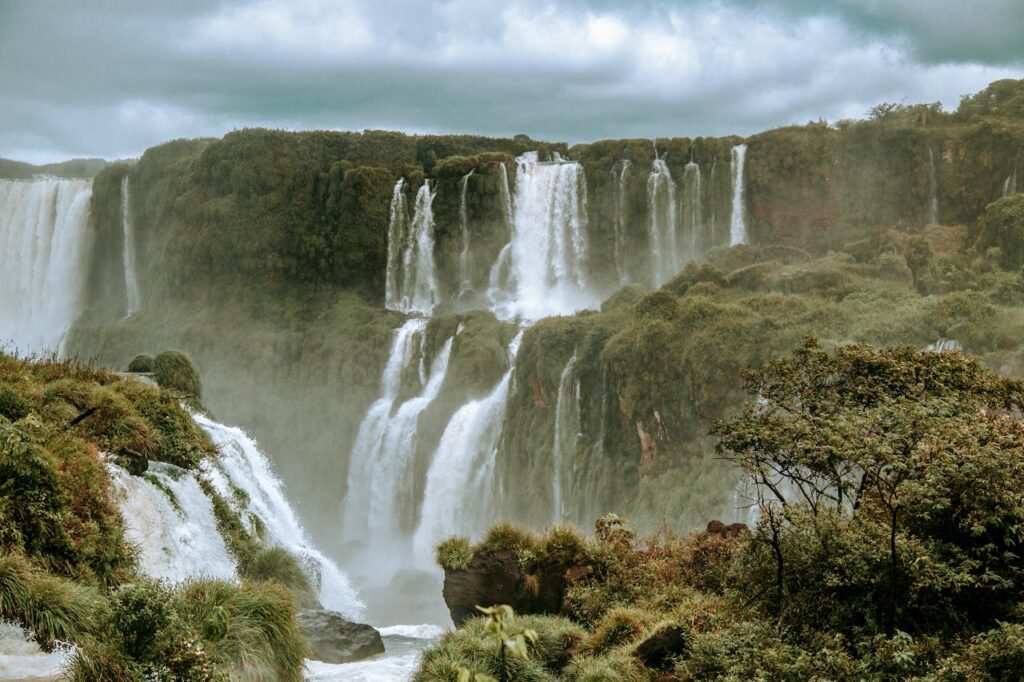
What are the most famous natural landmarks in South America?
Some of the most famous natural landmarks in South America include the Amazon Rainforest, the Andes Mountains, Iguazu Falls, Angel Falls, Lake Titicaca, and the Atacama Desert. These landmarks are renowned for their breathtaking beauty and ecological significance.
How has South America’s economy evolved in recent years?
South America’s economy has evolved with significant growth in sectors such as agriculture, mining, and tourism. Countries like Brazil, Argentina, and Chile have become major players in the global market. Despite this growth, the continent faces challenges such as political instability and economic inequality.
What is the significance of the Amazon Rainforest?
The Amazon Rainforest is crucial for regulating the global climate, producing oxygen, and supporting an incredible diversity of plant and animal species. It is also home to numerous indigenous tribes and plays a vital role in the cultural and ecological heritage of South America.
How do indigenous tribes contribute to South America’s cultural diversity?
Indigenous tribes contribute to South America’s cultural diversity through their unique languages, traditions, and ways of life. They have preserved their cultural heritage despite centuries of colonization and modernization, enriching the continent’s cultural landscape.
What are the challenges facing South America’s environment?
South America’s environment faces challenges such as deforestation, pollution, and climate change. These issues threaten the continent’s rich biodiversity and natural resources, necessitating concerted efforts for conservation and sustainable development.
How is South America addressing deforestation and climate change?
South America is addressing deforestation and climate change through reforestation projects, stricter environmental regulations, and initiatives promoting sustainable land use. International cooperation and local efforts are crucial in tackling these environmental challenges.
Facts About South America – South America’s Physical Geography
Coastal Plains
The coastal plains of South America stretch along both the Atlantic and Pacific Oceans. These areas are characterized by their varied landscapes, including sandy beaches, rocky shores, and fertile lowlands. The coastal plains are vital for agriculture, fisheries, and tourism.
Brazilian Highlands
The Brazilian Highlands, also known as the Brazilian Plateau, cover a significant part of Brazil and are known for their diverse topography, which includes rolling hills, valleys, and extensive plateaus. This region is crucial for Brazil’s agriculture and mining industries, contributing significantly to the country’s economy.
Guiana Highlands
The Guiana Highlands, located in northern South America, encompass parts of Venezuela, Guyana, Suriname, and French Guiana. This region is known for its dramatic landscapes, including the towering tepuis (tabletop mountains) and Angel Falls, the world’s highest waterfall.
Facts About South America – Important Historical Events
Colonization and Independence
The colonization of South America began with Christopher Columbus’ arrival in 1492 and continued with the Spanish and Portuguese conquests. The struggle for independence in the 19th century saw leaders like Simón Bolívar and José de San Martín play pivotal roles in liberating South American countries from colonial rule, leading to the formation of independent nations.
Inca Empire and Spanish Conquest
The Inca Empire, one of the most powerful and advanced civilizations in South America, was centered in modern-day Peru. The Spanish conquest led by Francisco Pizarro in the 16th century brought an end to the Inca Empire, significantly impacting the continent’s history and culture.
Facts About South America – Unique Natural Features
Amazon River Basin
The Amazon River Basin is not only the largest in the world but also one of the most biodiverse regions on Earth. This vast area supports a wide variety of ecosystems, from dense rainforests to extensive wetlands, and is home to countless species of plants, animals, and microorganisms.
Atacama Desert
In addition to being the driest place on Earth, the Atacama Desert is known for its unique landscapes, which include salt flats, volcanic peaks, and high-altitude geysers. Its clear skies make it an ideal location for astronomical observatories.
Andes Mountain Range
The Andes Mountain Range, stretching along the western coast of South America, is the longest mountain range in the world. It features some of the highest peaks, including Mount Aconcagua, the highest point in the Americas. The Andes are crucial for their natural resources and cultural significance.
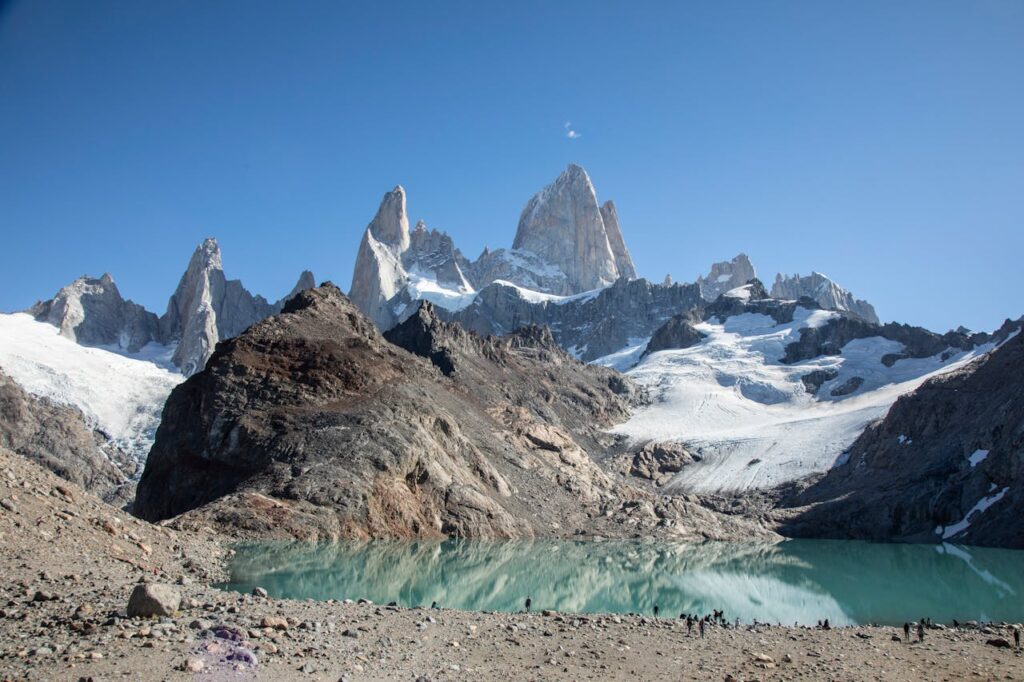
Facts About South America – Flora and Fauna
Animal Species
South America is home to a vast array of animal species, many of which are unique to the continent. From the jaguar and the green anaconda to the spectacled bear and the Andean flamingo, the continent’s diverse habitats support an incredible variety of wildlife.
Plant Species
The Amazon Rainforest alone hosts thousands of plant species, many of which are not found anywhere else in the world. The unique flora includes towering kapok trees, various species of orchids, and numerous medicinal plants used by indigenous communities.
Conservation Efforts
Efforts to conserve South America’s rich biodiversity are ongoing. National parks, wildlife reserves, and international collaborations aim to protect endangered species and their habitats. Education and awareness campaigns also play a critical role in promoting conservation.
Facts About South America Conclusion
South America is a continent of remarkable diversity and profound beauty. From the lush expanses of the Amazon Rainforest to the towering peaks of the Andes, it offers an array of natural wonders and cultural treasures. Understanding the facts about South America reveals a region rich in history, culture, and natural resources. As efforts continue to address environmental challenges and promote sustainable development, the continent’s unique heritage and natural beauty remain a source of fascination and inspiration for the world.
Related Facts: Fascinating Facts About North America (The Best 50)




